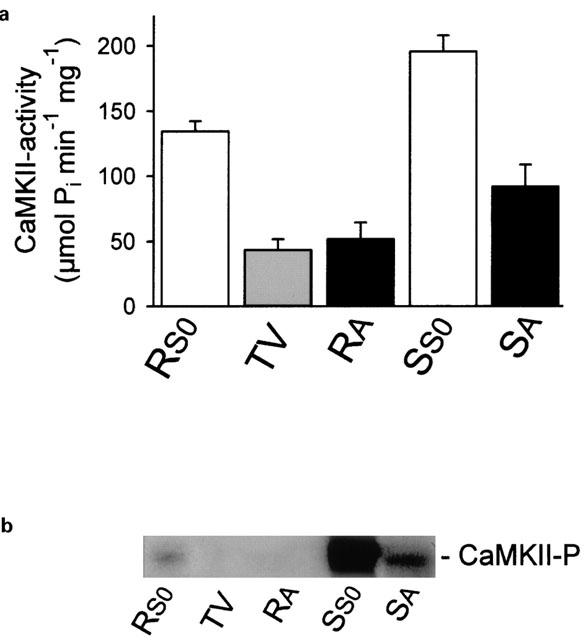Figure 4.

The abundance of CaMKII in SA vesicles doubled after carbachol-stimulation whereas the amount of autoactivated CaMKII was strongly increased. (a) The specific CaMKII transphosphorylating activity of SA vesicles was 2 fold increased after carbachol-stimulation compared to the apical membrane of the resting state. Apical membranes of resting or carbachol-stimulated rabbit gastric mucosal cells were incubated under CaMKII phosphorylation conditions to phosphorylate the CaMKII-specific substrate autocamtide-II. (b) A strong increase of autoactivated CaMKII (CaMKII-P) was detected for the postnuclear supernatant as well as for the SA vesicles after carbachol-stimulation compared to each corresponding membrane fraction of the resting state. Autoactivated CaMKII was probed with a phospho-specific, anti-autoactivated CaMKII. The post nuclear supernatant (S0) represents almost the total of cellular CaMKII activity; (RS0: postnuclear supernatant of the resting state, TV: tubulovesicles, RA: apical membrane of the resting state, SS0: postnuclear supernatant of the carbachol-stimulated state, SA: SA vesicles).
